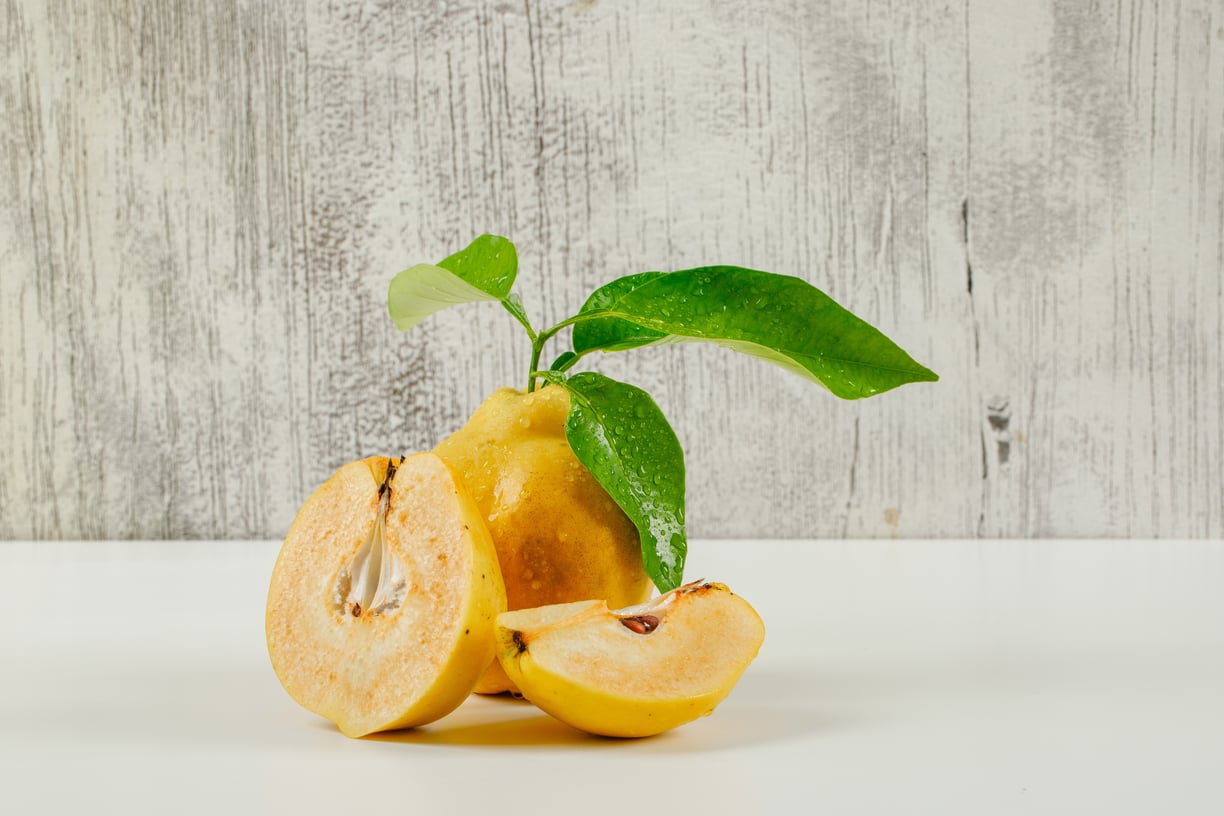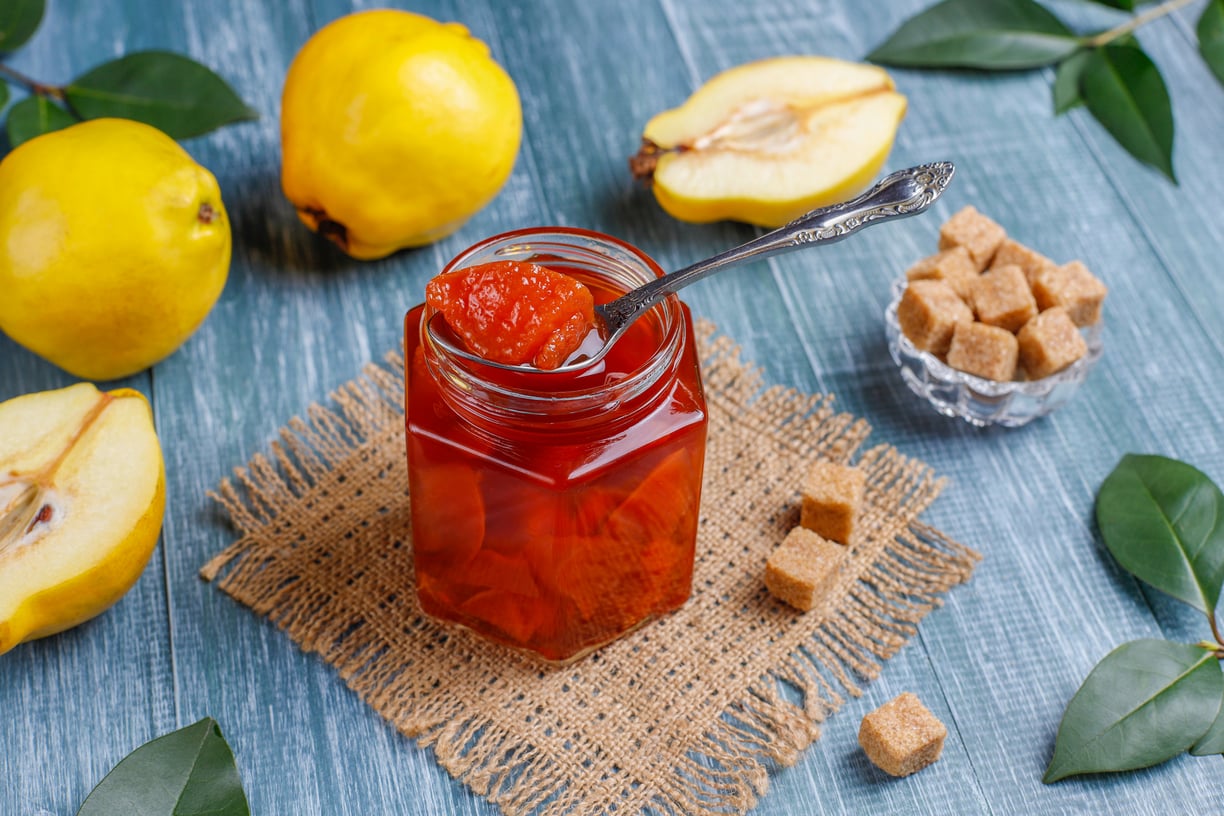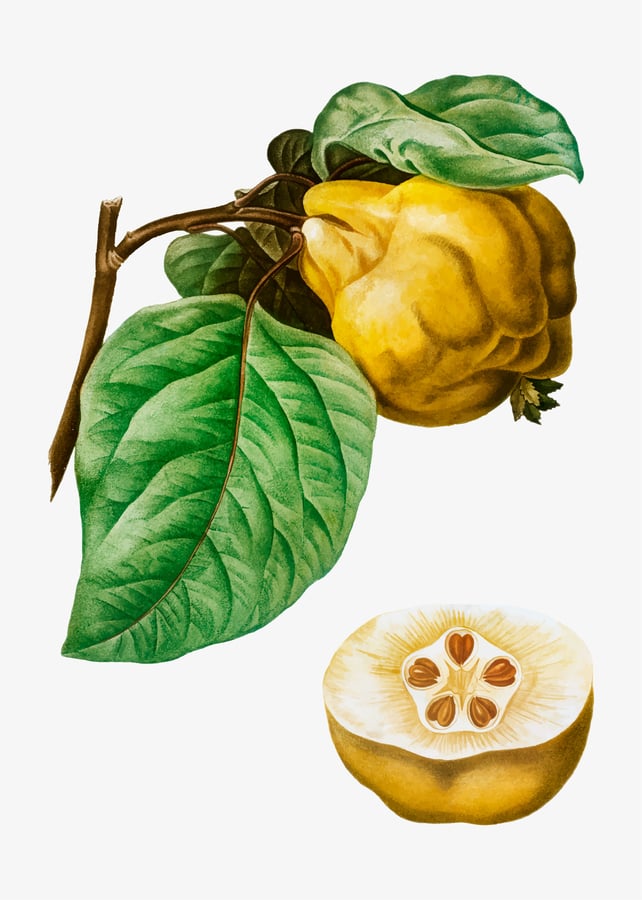Quinces
•Because apples were unknown in the ancient world, a quince might well have tempted Eve, and the golden apples of the Hesperides, given to Aphrodite by Paris of Troy, were probably quinces, too. •Quince is best known for its strong, tropical, and fruity aroma. This fruit was an inevitable part of wedding ceremonies in the
HEALTHY & FUN FRUITY FACTS


Quinces
-Because apples were unknown in the ancient world, a quince might well have tempted Eve, and the golden apples of the Hesperides, given to Aphrodite by Paris of Troy, were probably quinces, too.
-Quince is best known for its strong, tropical, and fruity aroma. This fruit was an inevitable part of wedding ceremonies in ancient Greece. Bride consumed quince to ensure pleasantly smelling, "perfumed lips".
-Ancient Greeks associated the quince with fertility, and it played an important role in wedding celebrations. It was offered as a gift, used to sweeten the bride’s breath before entering the bridal chamber, and shared by the bride and groom. Thanks to these associations, the quince has become known as the “fruit of love, marriage, and fertility.”
-In Greece, quince was sacred to Aphrodite, the goddess of love and fertility.
-Quince was popular and often consumed in ancient Rome. Romans usually prepared quince by mixing it with honey and leek.
-The alchemist and confectioner Nostradamus left several written recipes for quince compote in his book. His writings explained that chefs who peeled the fruit before cooking it did not know what they were doing, as the skin actually accentuates the smell of the fruit.
-In the Middle Ages, quince was highly valued. It was often served at tables of monarchs and aristocrats, who ate it at banquets and luxury culinary events as a sign of their greatness.
-The medicinal qualities of quince have been appreciated to be true since ancient times. Shakespeare wrote that quince was the “stomach’s comforter.”
-Quince is a small tree that can reach 16 to 26 feet in height.
-Quince develops simple, ovate leaves with smooth margins. They are pale green-colored due to a dense layer of white hairs on the surface. Leaves are alternately arranged on the branches.
-Quince produces large, pink, or white individual flowers at the end of the branches. Flowers contain both types of reproductive organs.


-Quince blooms during the spring and summer. Flowers attract bees (natural pollinators), but they are also able to perform self-pollination.
-The fruit of quince is large pome. The fruit has yellowish-white flesh filled with stone cells and numerous seeds in the middle. The surface of the fruit is covered with yellow skin that has a rough and woolly texture.
-Quince which grows in the temperate regions produces unpalatable, tart, and astringent fruit that needs to be thermally processed before consumption (high temperatures destroy tannins, bitter compounds). Quince can be consumed in the form of compotes, preserves, jellies, or as an ingredient of dishes made of seafood, poultry, and lamb.
-Quince which grows in tropical areas produces fruit with soft flesh which tastes like a blend of apple and pear. Tropical quince can be consumed raw.
-Quince is rich in Vitamins A, B, and C, fiber, as well as minerals like potassium, copper, selenium, zinc, phosphorus, calcium, iron, and magnesium. Also, quince is rich in certain organic compounds like catechin, epicatechin, limonene, and various other phytonutrients, all of which contribute to the health benefits of quince.
-Quince is often used as a rootstock for grafting the pears. Created hybrids remain small in size, but they produce a substantial amount of fruit that reaches maturity more quickly.
-Turkey is the greatest manufacturer of quince in the world with nearly 128.000 metric tons of fruit produced each year.
-Health benefits include an ability to help prevent cancer, aid in weight loss, improving digestive health, reducing cholesterol, boosting immune system strength, preventing gastrointestinal diseases, soothing inflammation, increasing the health of your skin, decreasing blood pressure, preventing allergic reactions, & stimulating circulation in the cardiovascular system.


